
Snakes Around Las Vegas, Wildlife Around Las Vegas
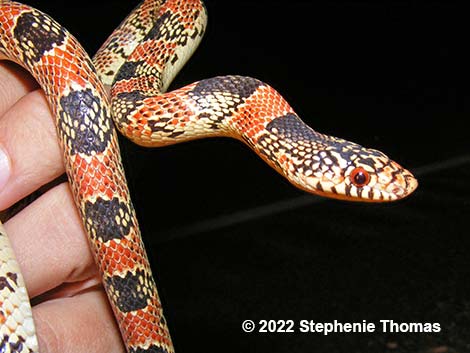 |
General Description: A medium sized snake with alternating red, black, and yellow bands on the dorsum. The belly is light and unmarked. Red and yellow scaled flecked with black, black scales flecked with white. Taxonomy: Colubrid Snakes Family (Colubridae) Technical Description: Length to 36 in. Dorsal pattern alternating red, black, and yellow bands. Black dorsal bands flecked with white; red and white bands flecked with black. Ventral surface pale with a few dark spots near the edges. Scales smooth. Head is long and only slightly wider than the neck. Most scales on the ventral surface of the tail are in a single row; anal single. |
 |
Diet: Feeds on lizards, lizard eggs, snakes, birds, and small mammals. Kills by constriction. Habitat: Mojave Desert scrub and salt desert scrub habitats with open sandy surfaces and scattered brush; also found in rocky areas below 5,000 ft in elevation. Range: The species occurs from Nebraska to Idaho to California, and southward into central Mexico. This subspecies occurs in almost all of Nevada, central and southern California, Utah, western and southern Arizona, and northern Mexico. |
 |
Breeding: One or two clutches of 4-11 eggs laid during summer. Similar Species: In southern Nevada, no other species of red, black, and white banded snake has the black and white flecking seen in this species. In Kingsnakes, the scales on ventral surface of the tail are in two rows. Coral snakes, which also have adjacent red-and-yellow bands, have a black head (remember: black lips bring the kiss of death). Comments: Primarily crepuscular. When threatened, this species may freeze, flee, or seek cover. They may also hide the head under a coil and vibrate the tail like a rattlesnake. When handled, this species may constrict the fingers, seemingly trying to hold on and prevent falling. May not musk. |
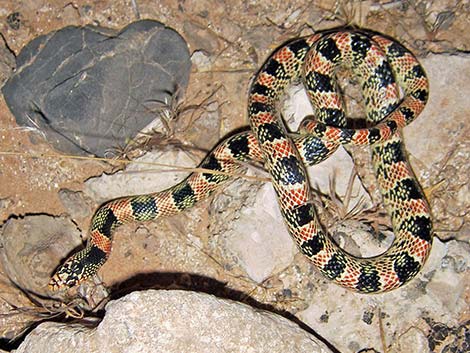 Normal banding pattern: red, yellow, and black |
 Atypical pattern: only black and white, but white flecking in black |
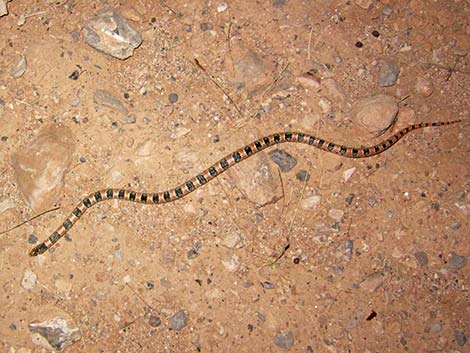 Escaping across open country |
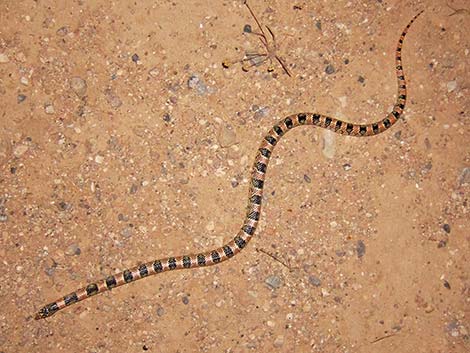 Escaping across open country |
 Looking for an escape route |
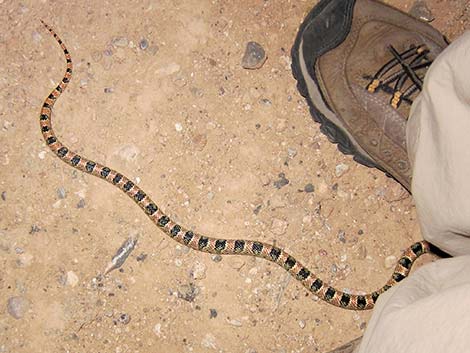 Finding a place to hide |
 Escape cover |
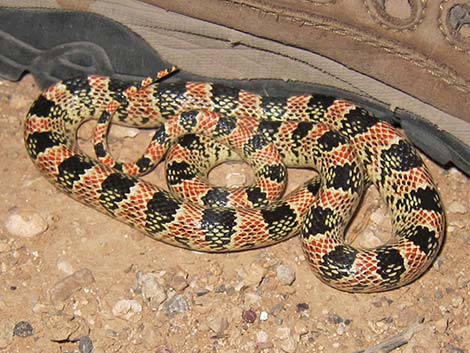 Escape cover |
 Hiding head under a coil |
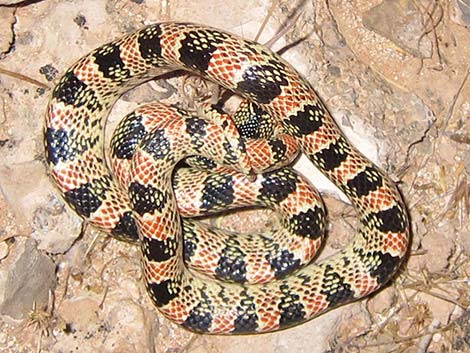 Hiding head under a coil |
 Banding pattern similar to a coral snake |
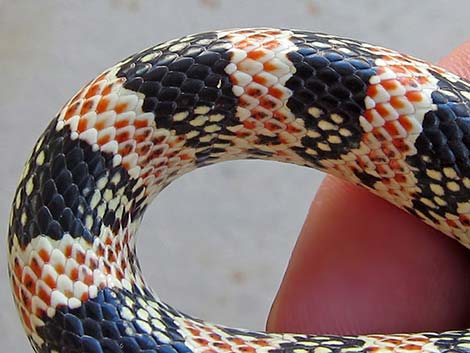 Banding pattern similar to a coral snake |
 White belly |
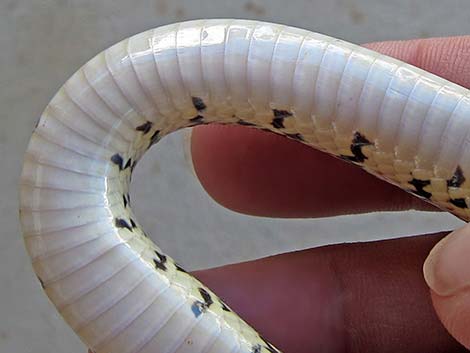 White belly |
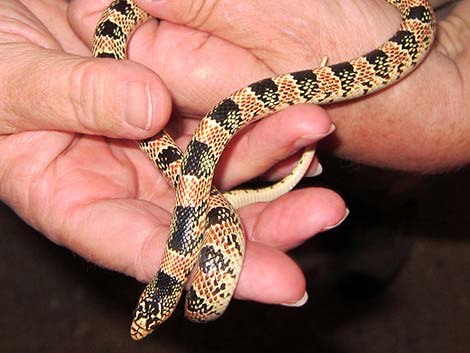 |
 |
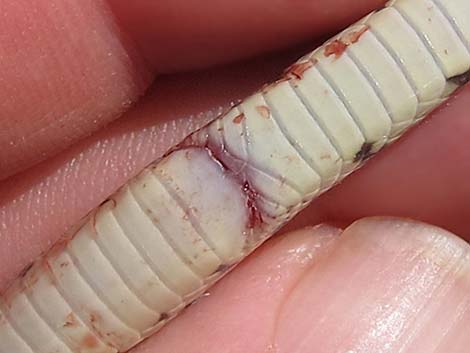 |
 |
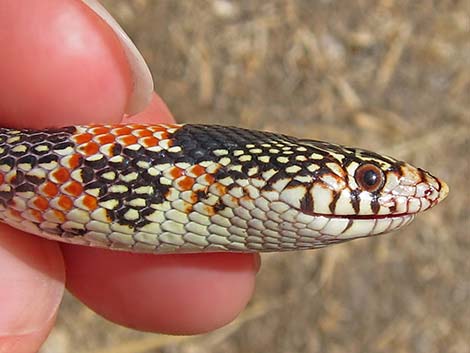 |
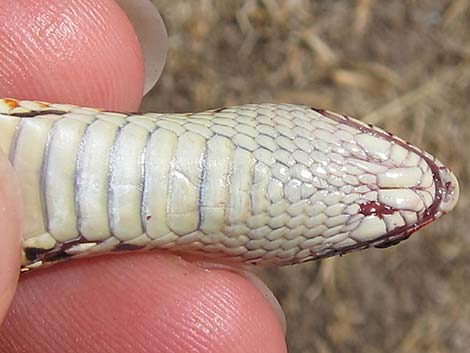 |
Note: All distances, elevations, and other facts are approximate.
![]() ; Last updated 221214
; Last updated 221214
| Snakes Around Las Vegas | Wildlife Around Las Vegas | Glossary | Copyright, Conditions, Disclaimer | Home |